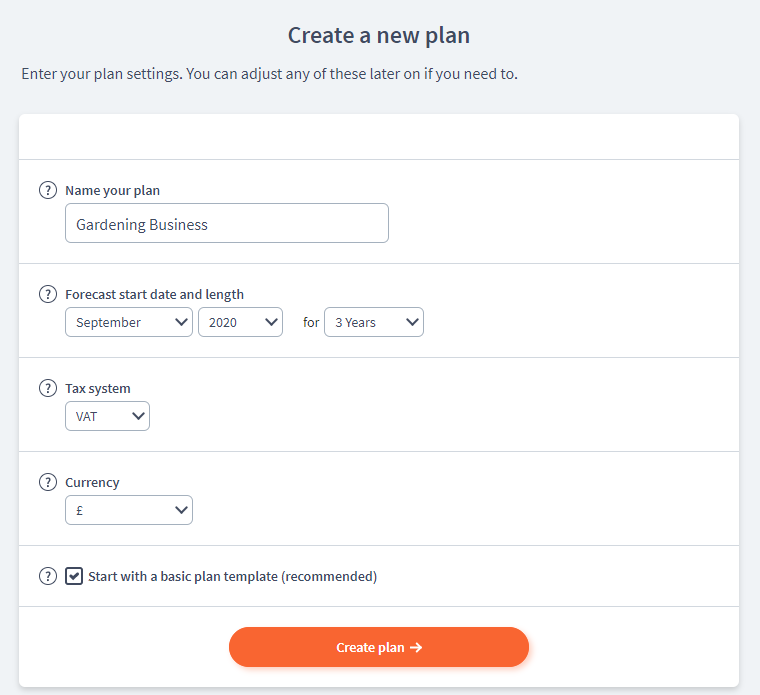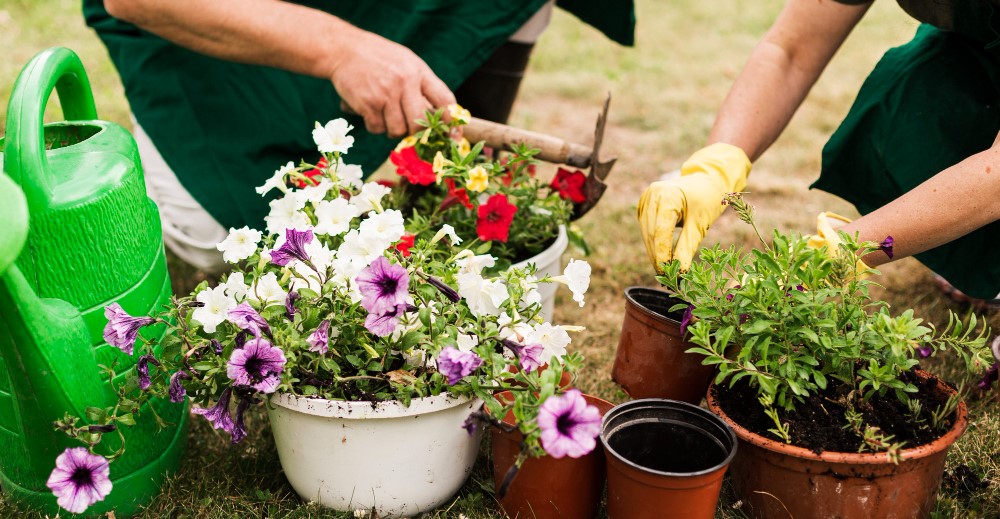

Do you currently use a gardening service for your property? If you’re fortunate enough to have a garden in the UK, chances are you spend a fair amount of time keeping it tidy.
While many people enjoy maintaining their own outdoor spaces, the growing demands of busy lifestyles have led to a rise in those outsourcing garden maintenance.
In this article, we’ll guide you through the essential steps to launch a successful gardening business in the UK, from market research to getting your first customers.
Let’s dig in!
Conducting market research – how to find customers and competitors
Every successful business starts with thorough market research. Understanding your target customers and competitors is crucial for crafting an effective business strategy.
Identifying your target customers
For a gardening business, your ideal customers are less about who they are and more about what kind of property they have. Here are some potential customer profiles based on differing gardening requirements:
- Homeowners with gardens (large or small)
- Landlords
- Care homes
- Property management companies
- Local councils (for public spaces)
- Holiday let owners
- Schools and universities
Of course, as with all businesses, you can’t target everyone. It’s better to focus on a niche, such as residential garden maintenance or commercial groundskeeping. This allows you to specialise and stand out in your market.
Scouting for customers
Since gardening businesses are highly local, you’ll want to focus your search on your immediate area. Here are some suggestions:
- Browse local magazines, newspapers, and community bulletin boards. Online directories can also help here
- Check out local property websites like Rightmove to identify potential areas
- Join neighbourhood Facebook groups to connect with homeowners
Understanding your competitors
Knowing your competition will help you to position your new business effectively.
We recommend you find out what services they offer, how much they charge, and where they operate. Use the same local sources to gather this intel. If you’re feeling bold, you could even contact competitors directly to get more insights!
Choosing a business model for your gardening business
Now that you understand your market, it’s time to decide how you’ll operate. There are two options here:
Direct sales model
This is the most straightforward business model. You market your services directly to local customers and manage your business independently.
Franchise model
Alternatively, you could join a gardening franchise. This provides you with a ready-made brand, training, and support but comes with higher upfront costs.
Choose a model that aligns with your financial and business goals. Either way, you’ll need to crunch some numbers to determine your break-even point.
Choosing a pricing strategy
So now you have an idea of what you’ll be doing, you need to determine the pricing! This can depend on the type of services you’ve settled on:
- Maintenance work (such as mowing the lawn) is typically charged by the hour, ranging from £20–£40 per hour.
- Larger projects (such as landscaping) require quoting for the job, which involves breaking down costs for materials and labour.
You have to consider your local competition when implementing your pricing. If you price too low, you won’t succeed in obtaining a healthy profit margin.
Marketing your gardening business
Marketing a new gardening business is crucial to start bringing in customers. We have listed a few steps below to help you get started.
Build customer trust with new reviews and a portfolio
When starting out, offer services to friends or family at a reduced rate in exchange for reviews and photos. This helps establish credibility and create a portfolio for you to share later.
Advertise locally
- Advertise in local papers and magazines.
- Use social media platforms like Instagram or Facebook to showcase your work.
If you specialise in doing larger jobs or landscaping, consider investing in a website to enhance your online presence.
Setting up and running your gardening business
Before you go out and get cracking with your business, there are a few things you’ll need to set up and do.
Registering your business
In the UK, you’ll need to register with HMRC for tax purposes. Keep detailed records of your expenses and income to streamline your annual self-assessment tax return.
Other countries will differ, so make sure you check, a visit from the tax man is the last thing you want!
Insurance
Consider public liability insurance to protect against accidental damage and professional indemnity insurance for peace of mind.
Finally, if you’re new to the trade, training courses on health and safety or handling equipment can boost your skills and confidence.
Funding your gardening business
Funding can make or break a startup, but one of the benefits of a gardening business is its low startup cost. Most gardening businesses can be started for under £1000, especially if you don’t need a van. Your biggest costs will typically include:
- Petrol
- Tools & equipment
- Advertising
- Insurance
- Accounting fees
If you do need a van, you can either lease or buy one second-hand, which can still keep your overall costs relatively low. Even with a van, applying for business funding through banks or investors is usually unnecessary unless you need significant investment for equipment or branding.
The financial plan
The next crucial step is your financial plan. Forecasting your income and expenses will help you stay within your budget and avoid running out of cash. It’s especially useful if you plan to expand your business.
Brixx is a great tool for financial forecasting, especially for startups, even if you don’t have an accountancy background. You can sign up for Brixx and follow along with the steps below, or use a template to create a cash flow forecast in Excel.
Section 1: Setting up your plan
When starting a new plan in Brixx, you’ll select the plan length (e.g., 3 years), choose your VAT status (if applicable), and set your currency.

Once you hit “create plan,” you’ll see a list of groups on the left, such as “Sales” and “Operating costs,” where you’ll categorize business elements.
For example, in the “Sales” category, you might list “Per hour garden maintenance” and other services as needed.

Section 2: Income
For this plan, let’s assume you’re offering £25 per hour for garden maintenance. With 7 hours of work per day, and 5 days a week, you can earn £750 a week, which totals £3375 a month. At maximum capacity, this would be 135 units (hours) sold each month.
However, starting small is realistic. In the early days, expect to work at about 50% capacity, gradually increasing as you gain more customers.
You can track income in Brixx by creating multiple components for different services or clients. This flexibility allows for detailed tracking as your business grows.

Section 3: Costs of sales
Your main expenses will include equipment maintenance and fuel. For simplicity, let’s assume costs of £3 per hour. This means for every £25 of revenue, you’ll only earn £22 in profit before tax.
Add these expenses to your financial plan and proceed to the next section.
Section 4: Assets
Assets are tangible or intangible items that the business owns. This can includes items such as mowers, strimmers, or even a van. For example, you might buy a second-hand van for £7000 and a mower for £500. In Brixx, you can add these assets, and account for depreciation (e.g., 10% per year for the van).
Section 4: Other startup costs
You’ll also need to consider insurance (both Public Liability and Professional Indemnity), with an estimated monthly cost of £17.53. Additionally, you can plan for marketing expenses like £50 per month for print advertising and £25 per month for social media ads on Facebook.
Once all these costs are added to Brixx, you’ll get a clear picture of your projected cash flow.

Now that you’re up and running and generating a steady income, you can start to think about the next step.
Growing and expanding your gardening business
Once you’ve settled into a steady flow, you might consider expanding your business. Hiring an additional worker can increase your capacity. For example, bringing in a trainee gardener on a salary of £18,000 will allow you to take on 75% more work, boosting your monthly income.
With Brixx, you can model these growth scenarios and see how they impact your financials.
We can see this reflected on our cash flow and dashboard below.

Conclusion
Starting a gardening business in the UK is a low-cost venture with good growth potential. By focusing on local customers and building a solid reputation, you can grow your client base. With the right startup forecasting tool, you’ll have the insights you need to keep your business on track and plan for future expansion.
By using Brixx for your financial forecasting, you can ensure your gardening business thrives from day one. Sign up today to get started on planning your business and setting yourself up for success.
















